Potatoes: What They Are & The Benefits Potatoes Can Provide!
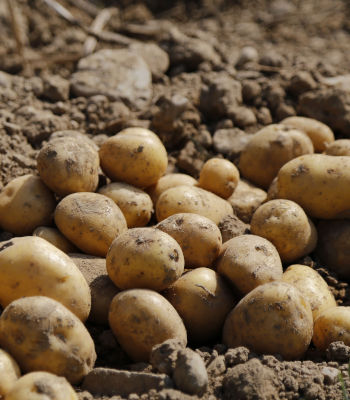
Potatoes have been sentenced as both carcinogenic and weight-bearing. The earthy tuber simply has a pretty bad reputation.
But there is a reason for that. When you consume potatoes in refined form, french fries, chips and powder mash, then it’s actually unhealthy food.
However, if you eat potatoes as supposed to, then it's real super food!
Potatoes are classified as a vegetables, in the subgroup starchy vegetables. ◳
Solanum tuberosum is the potatoes botanical name. The genus Solanum means "the nightshade plant". You also find plants like tomatoes and peppers among the nightshade plants.
When you think of potatoes you might picture a yellowish round tuber.
But the tubers come in many different variations. Dozens of potato cultivars have been selectively bred specifically for their skin or, more commonly, flesh color, including gold, red, and blue varieties that contain varying amounts of phytochemicals, including carotenoids for gold/yellow or polyphenols for red or blue cultivars.
Table of Contents
What Is A Potato?
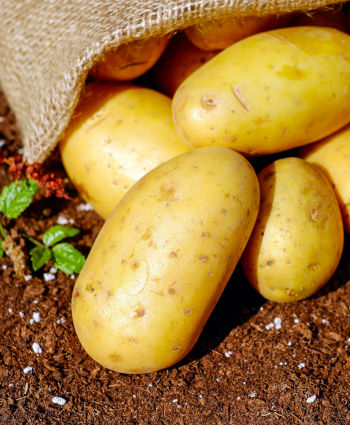
The potatoes are a perennial herb with green leaves. The edible part is the tubers that grow under ground.
There are about 5,000 potato varieties worldwide that are cultivated and about 200 wild species and subspecies.
In the Northern hemisphere where the winters are cold, the plants freeze during winter and are therefore not perennial. So even if the potato plant itself is a perennial you have to, in the northern hemisphere, plant new potato plants every spring.
Potatoes are low in calories, a medium-sized baked potato contains only about 110 calories.
They are also a good source of vitamins C and B6, manganese, potassium, iron and antioxidants.
History Of The Potato
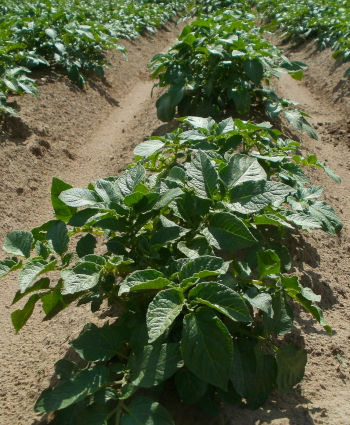
Potatoes, which is one of the world's most important staple foods, originate in South America, where it’s been cultivated since between 8000 and 5000 BC. It has since spread around the world and become a staple crop in many countries.
The potato was discovered in Peru in 1530 by the Spanish Gonzalo Jiménez de Quesada who brought it to Spain in 1539.
In North America early colonists in Virginia and the Carolinas grew potatoes from seeds or tubers from Spanish ships. But the earliest, proven, potato crop in North America was in Londonderry, New Hampshire in 1719.
The potato came to Scandinavia in the 17th century. During a couple of crop failures in the 1770s, potatoes became a serious alternative. In the beginning, the potato was mostly used for bread baking and animal feed.
Potatoes grew in popularity in the 19th century when the knowledge of its use in the preparation of spirits became generally known. A problem surfaced as the making of these spirits consumed large amounts of cereals, which were needed for bread baking. This insane spirit-making period resulted in many sleepless nights for a lot of hungry Scandinavians.
It took a while into the 19th century before the potatoes properly found it’s way on to the Scandinavian dining tables.
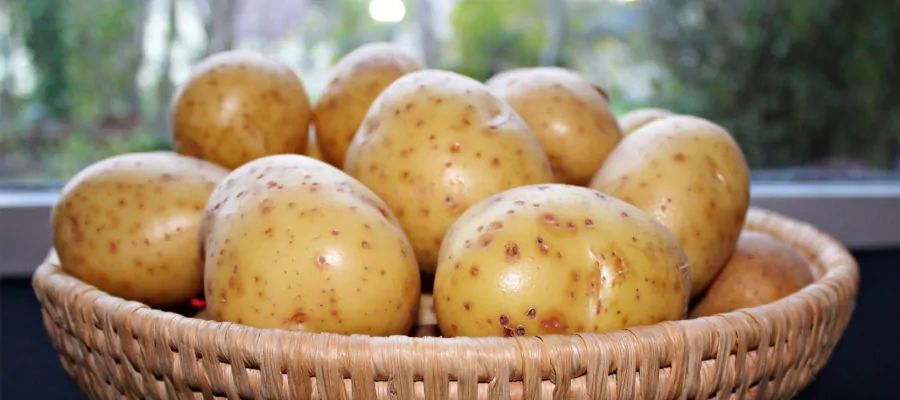
Are Potatoes Nutritious?
Potatoes may not be the first commodity that comes to mind when talking about nutritious foods, but if you’re looking for a healthier substitute for pasta and rice it’s perfect. Potatoes are, when cooked right, very nutritious. Among other things, potatoes are rich in vitamin C, vitamin B6, potassium, iron and fiber. The skin of the potato contains much of these nutrients.
Potatoes are one of the world's most popular foods and one of the most useful. It is 99.9 percent fat-free and contains valuable vitamins and fibers. Potatoes are particularly high in vitamin C and are a good source of several B vitamins and potassium.
The skins provide substantial dietary fiber ◳ and antioxidants.
Potatoes are a good base food. In addition to their energy content in the form of carbohydrates, potatoes provide vitamin C, some B vitamins, potassium and dietary fiber. The protein content is low but the protein is of high quality.
Research findings show that potatoes can make us less stressed. The potato contains substances that stimulate the brain substance serotonin which makes us happy and calm.
If you want to sleep well, you can eat a baked potato before you go to bed. This is because the vitamin B6 in potatoes are critical to maintaining neurological health. Vitamin B6 helps create useful brain chemicals ◳, including serotonin, dopamine and norepinephrine.
Potatoes contain lots of antioxidants. The more colorful skin and flesh of the potato, the higher is the total antioxidant activity. Even more interesting is that there are between five and ten times more antioxidant compounds in the skin ◳ as in the flesh. Eating the skin of the potato is very good for you as it’s a great source of fiber and has a very high level of antioxidant content.
Unlike rice and pasta, potatoes with their skin intact actually contain a lot of vitamin C. At the same time, the potato is also a source of vitamin B and minerals such as potassium and iron.
How useful the potatoes are, however, depends on how it is cooked. Potatoes in the form of french fries, mashed potatoes in powder form and potato chips causes your blood sugar to spike, increases the degree of inflammation in your body and destroys almost all the healthy nutrition that the potato had originally.
Comparing Potatoes With Pasta And Rice
Comparing In Equal Amounts (100 g)
Here's a chart comparing a selection of nutritional content between potatoes, pasta and rice in equal weight (100 g).
Potatoes are more comparable, nutritionally, to rice but when compared to pasta, pasta clearly has a lot of more iron and magnesium as well as protein content.
Comparing Nutrition Content Of Potatoes, Pasta and Rice (per 100 g)
| Nutrient | Potatoes | Pasta | Rice |
|---|---|---|---|
| Protein | 2.03 g | 14.29 g | 6.67 g |
| Carbohydrates | 17.57 g | 69.64 g | 77.78 g |
| Dietary Fiber | 1.4 g | 7.1 g | 0 g |
| Calories | 74 kcal | 357 kcal | 356 kcal |
| Vitamin C | 18.2 mg | 0 mg | 0 mg |
| Potassium | 419 mg | 197 mg | 52 mg |
| Magnesium | 16 mg | 48 mg | 9 mg |
| Iron | 0.73 mg | 2.57 mg | 0.8 mg |
| Calcium | 14 mg | 36 mg | 0 mg |
When looking at this chart, if you exclude the potassium and the vitamin C content, potatoes doesn't seem to be all that healthy when comparing it to pasta and rice.
But...
Comparing potatoes to pasta and rice when you equalize for calories (100 kcal)
Here's a chart comparing a selection of nutritional content between potatoes, pasta and rice in equal amount of calories (100 kcal).
We do this because you should have a balance of energy intake and energy use in your everyday life. If you eat more calories than what you use during a prolonged period of time you gain weight. Too much weight is unhealthy.
So we recommend you choose foods that provide you with more nutrients and health benefits per calorie.
When comparing potatoes with pasta and rice equalizing calories you see the health potential of potatoes much more clearly than when you equalize them according to weight.
Potatoes are amazing!
Comparing Nutrition Content Of Potatoes, Pasta and Rice (per 100 kcal)
| Nutrient | Potatoes | Pasta | Rice |
|---|---|---|---|
| Protein | 2.74 g | 4.00 g | 1.87 g |
| Carbohydrates | 23.74 g | 19.51 g | 21.85 g |
| Dietary Fiber | 1.89 g | 1.99 g | 0 g |
| Vitamin C | 24.59 mg | 0 mg | 0 mg |
| Potassium | 566.22 mg | 55.18 mg | 14.61 mg |
| Magnesium | 21.62 mg | 13.45 mg | 2.53 mg |
| Iron | 0.99 mg | 0.72 mg | 0.22 mg |
| Calcium | 18.92 mg | 10.08 mg | 0 mg |
When Potatoes Become Unhealthy
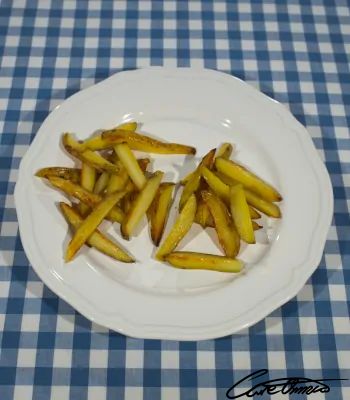
Potatoes can be prepared in so many different ways. It can also be thought of as a comfort food, like when you make richly mashed potatoes with butter and sour cream or crispy fries fried in oil. But when prepared in these ways, they can lead to weight gain, diabetes and heart disease, according to the Harvard School of Public Health. ◳
This effect is even more pronounced when you fry potatoes. This was shown in an eight year long study published in 2017 in The American Journal of Clinical Nutrition. ◳ They found that people who ate fried potatoes twice a week had an increased risk of death.
The study examined the potato consumption in a group of 4,400 people between the ages of 45 and 79. By the end of the eight year, 236 people had died. Researchers found that of those who died during these 8 years those who regularly ate fried potatoes, like french fries, chips or other fried potato products, had a death rate of more than twice of the control group that stayed away from the fried potatoes.
The study did not find any correlation between non-fried potato consumption and risk of death. In recent years, the overall consumption of potatoes has declined in the United States, but processed potato intake, like french fries and chips, has dramatically increased. This is worrying.
Potatoes aren’t necessarily bad for you. When cooked the right way they are good for you.
The Most Useful Way To Cook Potatoes
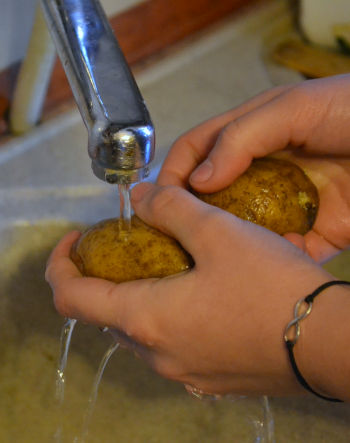
Mealy, firm, fresh, fried, deep-fried, the versatile potato comes in many forms and can be cooked in a variety of ways. But what is the best way to prepare this tuber? Boiled or in the oven on low heat, that’s the way to go!
Why you should cook the potato on low heat
Boiled potatoes are good for you, as are potatoes that’s been cooked in the oven. But in order to preserve the nutrition it is important to prepare on low heat.
Keep the skin on and cook on low heat so that the potatoes still has its natural color. The brown color that appears on the potatoes during cooking is actually a sign that the nutritional value of the potato is being destroyed.
So a healthy way to cook potatoes in the oven is to put the potatoes in the oven, with their skin, at 160 degrees for about 40 minutes but be sure to take them out before you burn them.
In the event of excessive heating, a substance called acrylamide might be formed in the potato, which is carcinogenic. You should be aware that
acrylamide is present in ready-to-eat frozen potato products ◳ even before treatment in the home. So when buying frozen potato products you are actually bringing carcinogenic food into your home and family.
Eat potatoes with the skin
The highest concentration of vitamins B and C is in the skin or in the flesh just below the skin.The skin also contains lots of fibers and antioxidants, so just scrub the potatoes clean, boil them whole or oven bake them. Be sure to eat the potato with the skin.
Soak them
If you are baking potatoes in the oven or roasting them in a frying pan, it may be a good idea to first soak the cut pieces for 20 minutes. That gives you a tastier potato. It will also minimize the formation of the carcinogenic acrylamide.
Let them cool
If you eat the potato cold, the starch in the potato has been converted into so-called resistant starch, which, like fibers, passes intact through your intestinal tract. It gives the intestinal bacteria nutrition and you feel full longer.
But, you don't have to eat the potatoes cold. Even if you heat it up again, many of the fibers are left.
Are Potatoes Toxic?
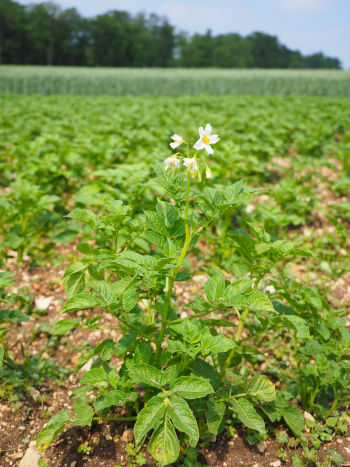
A potato plant is between 30 and 80 cm high and its upper parts are toxic. In particular, it applies to the fruit, a tomato like berry that contains many small, kidney like seeds, which develops from the white, rosy red, yellow or blue flowers.
As a protection against the attack of fungi and bacteria, the whole potato plant except the tubers contains the substance solanine which is toxic to both humans and animals.
Potato stems, branches, leaves and fruits are toxic, containing alkaloids such as arsenic, chaconine and solanine. Solanine is "very toxic even in small amounts,"
according to the National Institutes of Health, NIH. ◳
If you eat the toxic parts
Solanine has a bitter taste and is irritating to the throat. The most common effects are nausea, vomiting, abdominal pain, diarrhea, and headache.
Fever may be an early symptom of poisoning. Drowsiness and fatigue may develop.
In severe cases, neurological events may include, drowsiness, apathy, confusion, weakness, and hallucinations that may be followed by unconsciousness.
This is according to the toxicology data network.
You should only eat the tubers
The edible tubers grow under ground and are usually white, yellow or pink. The skin can vary more in color. The skin can be eaten if you clean the potatoes properly.
If the tubers are exposed to sunlight, the skin begins to produce chlorophyll and gives the potato a green color. At the same time, solanine is produced, so green potatoes should not be consumed. According to the NIH, you should never eat potatoes that are spoiled or green below the skin.
What You Can Make Of Potatoes
In Scandinavia we use potatoes in various courses.
Here are some of the ways that we use potatoes
- Boiled potatoes
- Mashed potatoes
- Potato gratin
- Potato salad
- French fries
- Baked potatoes
- Palt – like a dumpling, it’s mashed potatoes that's been filled with meat
- Potato buns – round and slightly flattened buns of mashed potatoes, eggs and breadcrumbs
- Potato pancakes – flat, fried cakes of plaque that also contain raw potatoes
- Raw cakes – flat, fried cakes of raw potatoes
- Hasselback potatoes – an oven baked potato with butter and breadcrumbs
- Jansson's Temptation – like a potato gratin with anchovy
- Potato chips – thin fried potato slices flavored in different ways, eaten more as an accessory
- Potato croquettes – round fried buns of mashed potatoes, wheat flour, eggs and breadcrumbs
If you want to try out some of these I suggest you read our article title What To Do With Potatoes? [6 Tasty Scandinavian Recipes!] next.
Conclusion: Potatoes Can Be Surprisingly Healthy And Also Unhealthy!
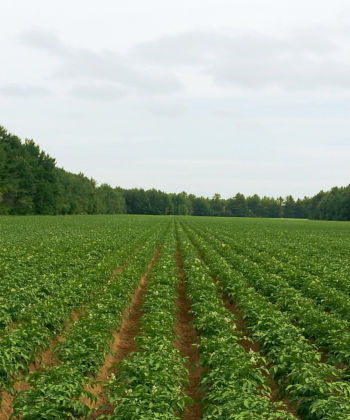
Potatoes have been around for ages. It’s a staple food that is very important in many parts of the world. But in resent years the potatoes have got a bad reputation in the westerns societies. That's a shame because the potatoes are really nutritious if prepared the right way.
There is though a good explanation to the bad reputation. In our effort to refine food, we have gone overboard with the potatoes. French fries, chips and other fried processed potatoes spikes your blood sugar, increases the degree of inflammation in your body and provides you with almost non of the nutrition that the potato had originally!
But if you cook the potatoes right and leave the skin on potatoes are really beneficial for you health. They are rich in antioxidants, vitamin C, vitamin B6, potassium, iron and fiber.
There are toxic parts of the potato plant but the tubers are safe to eat. Just be careful when you’re preparing the potatoes and see that you don’t have any green parts on it.
I hope you feel that you’re ready to make a lot of nice and healthy potato dishes that that are not just delicious but also very good for you!
I also hope you’ve learned a thing or two about potatoes that you didn’t know before!
I for one will never look at a potato the same way again!



 TM
TM